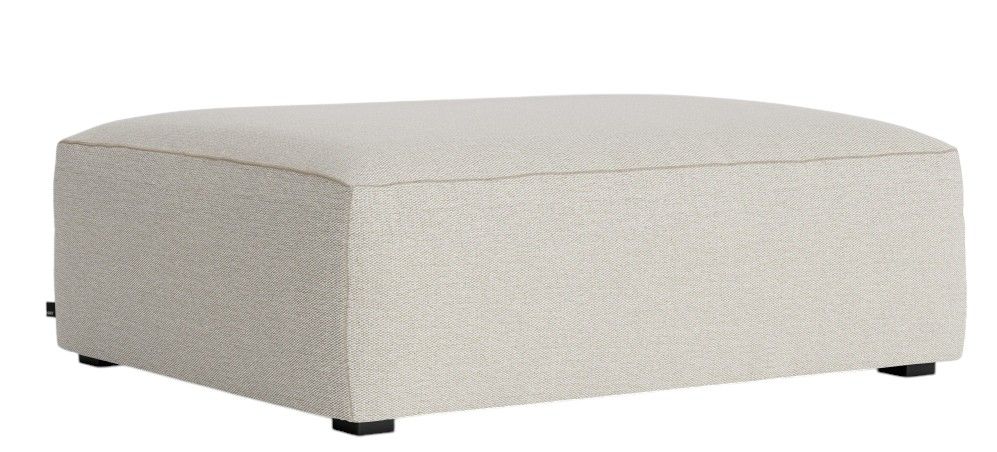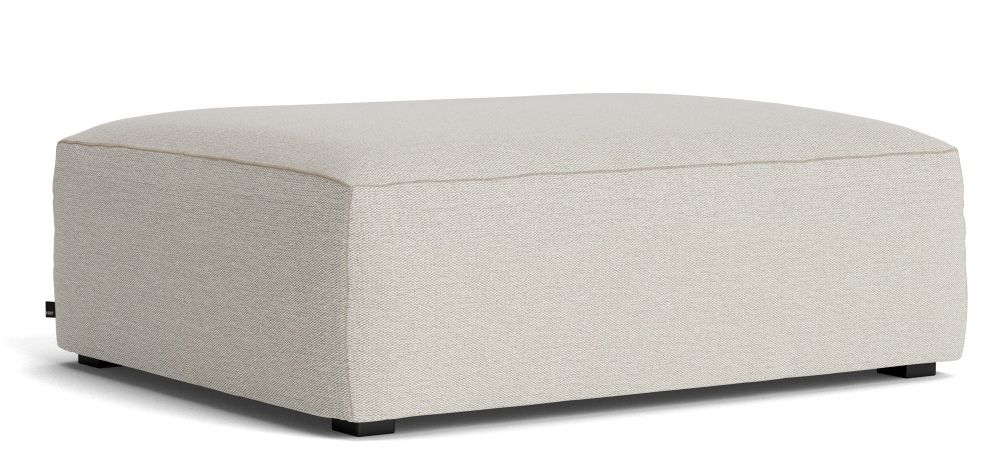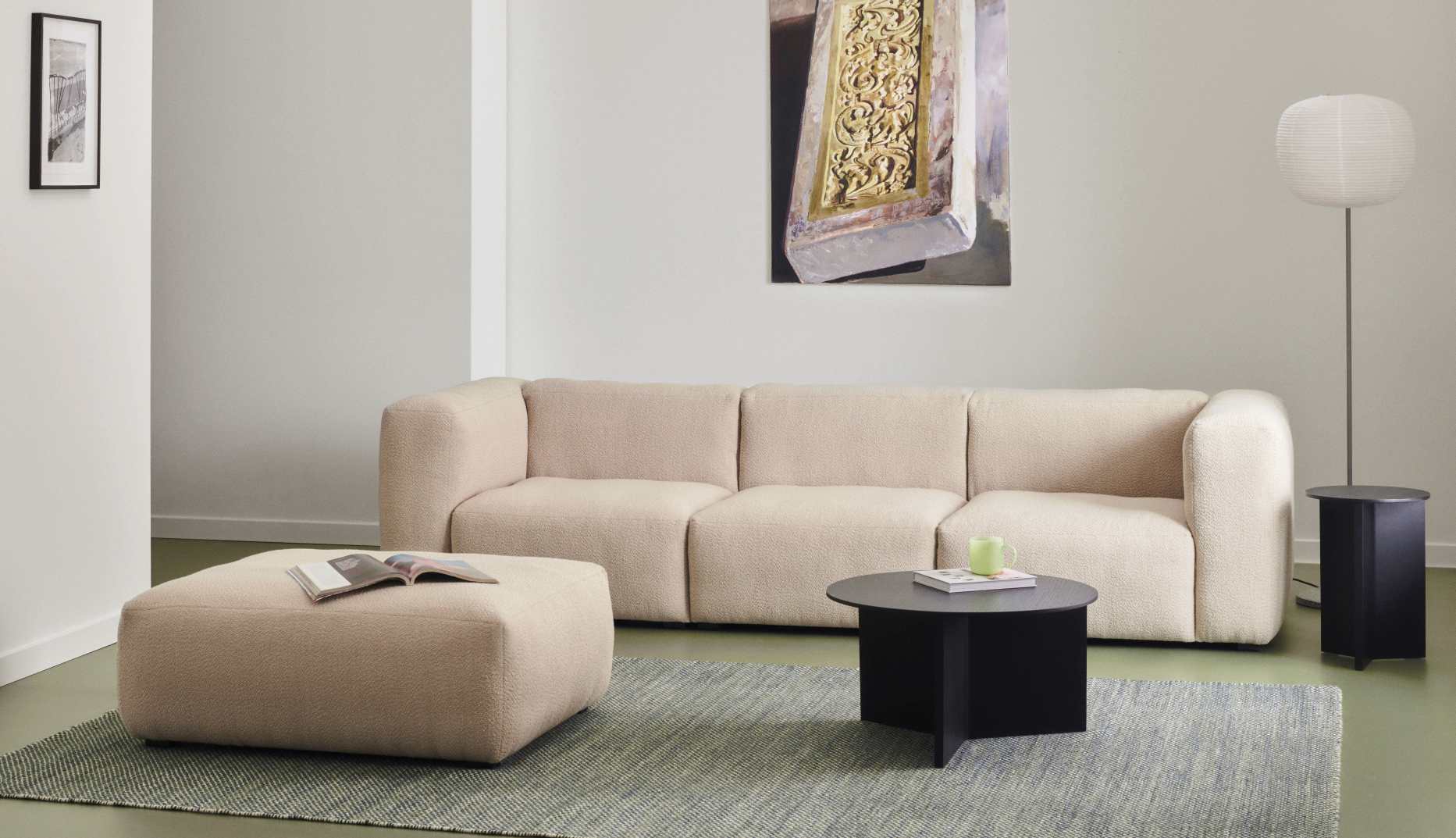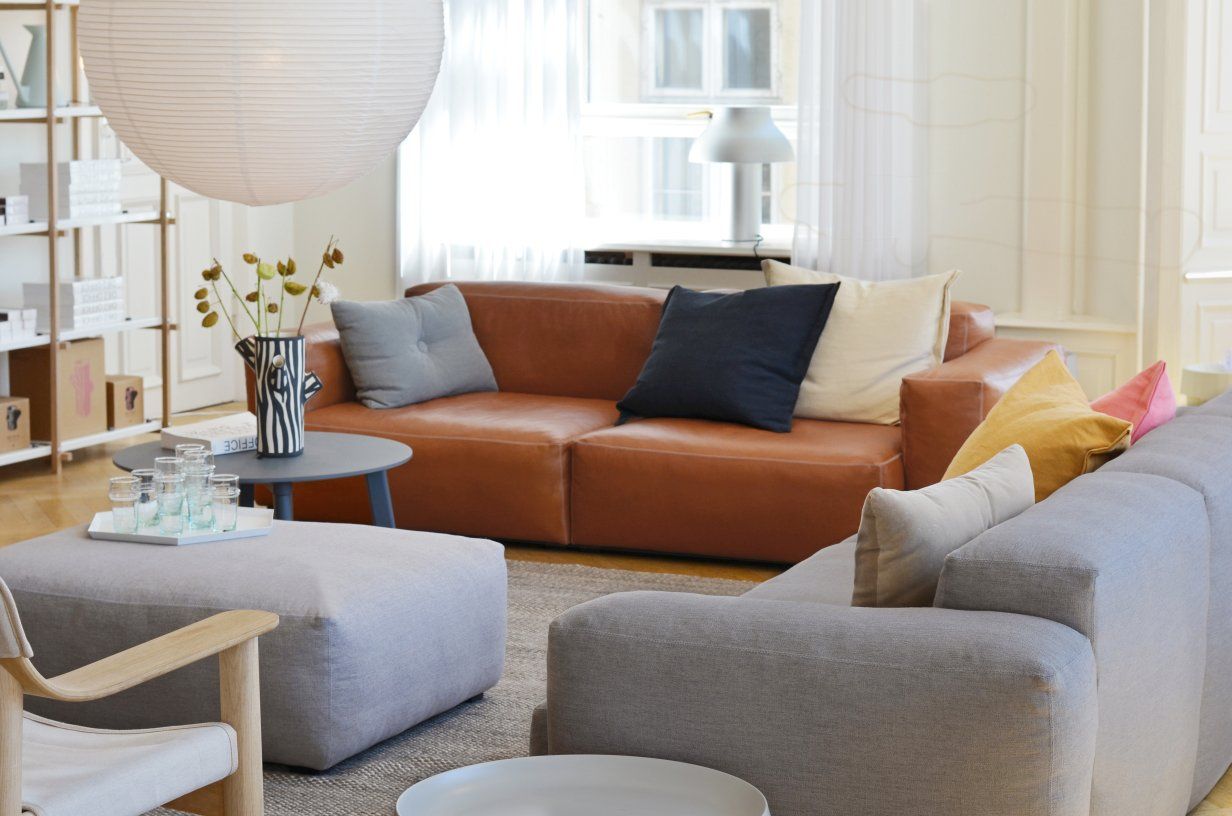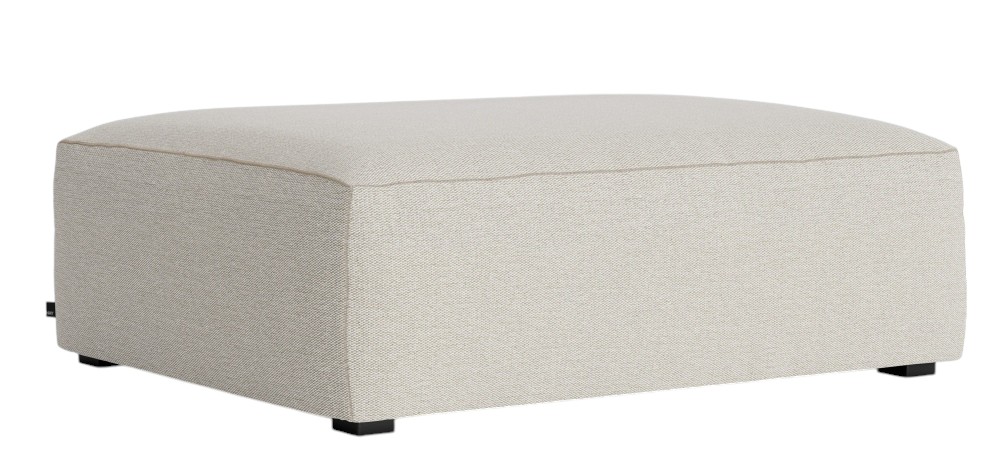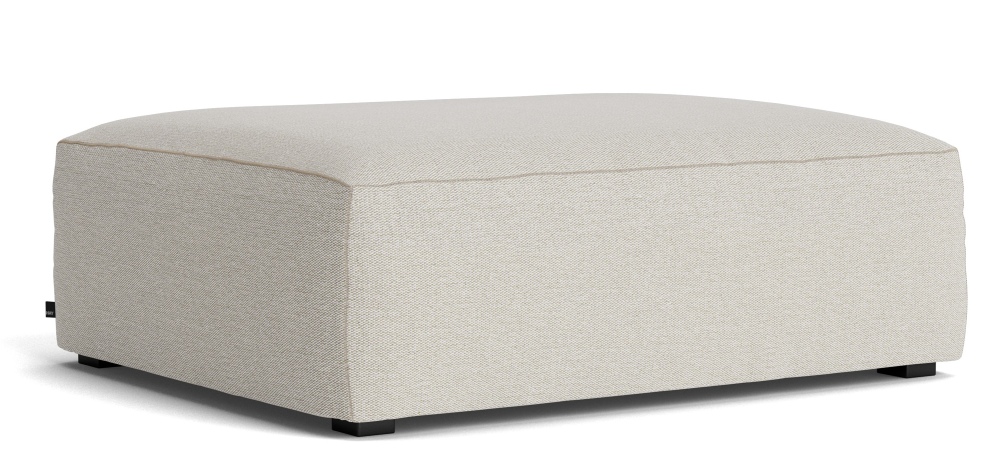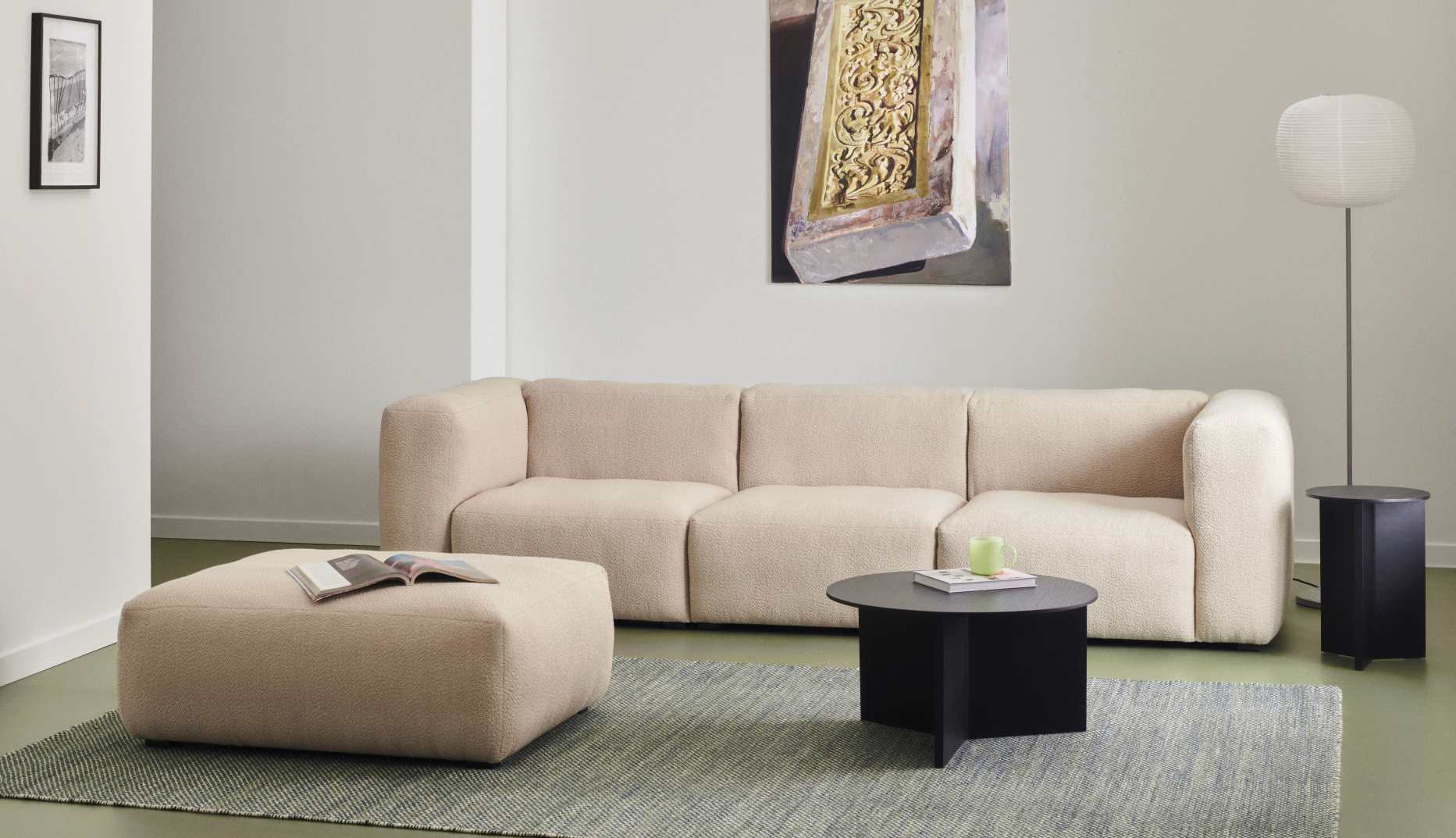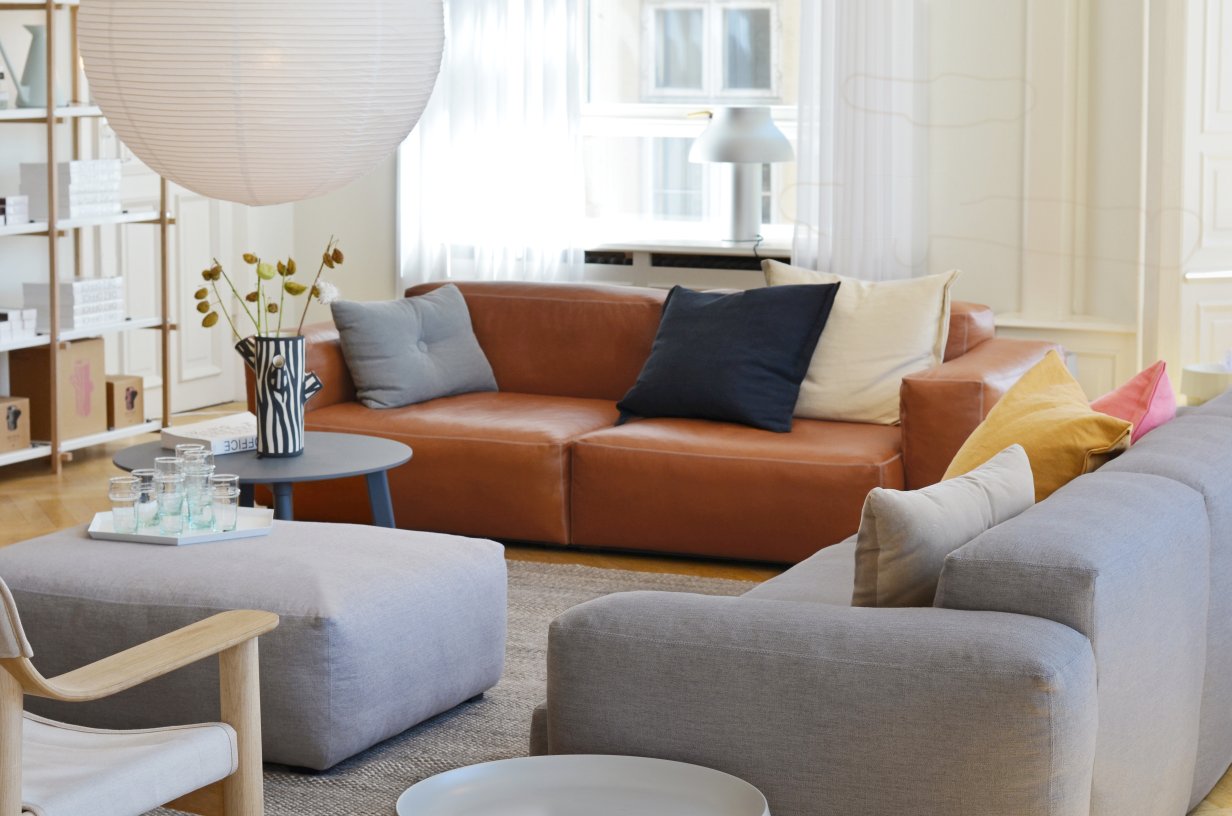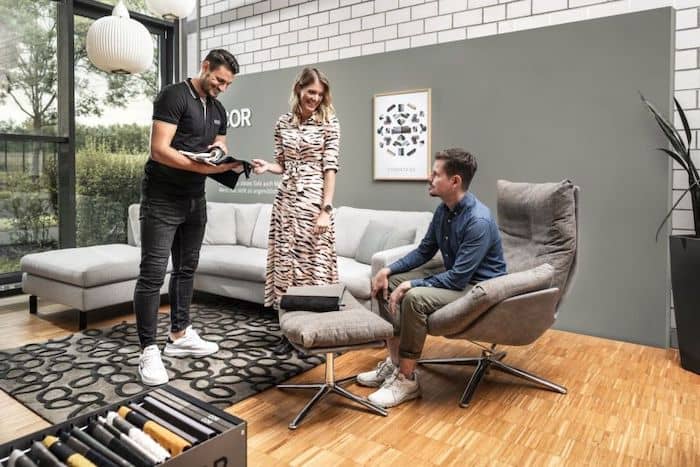Bestseller: Mags Soft Ottoman S02 Small Stool from Hay
The Mags sofa collection is one of the most successful furniture series from HAY and designer Jakob Wagner. The rounded edges, deep seats and low frame give the sofa its casual lounge look. Thanks to modular modules, the cosy Mags sofa can be configured and extended to suit your needs. The ottoman invites you to put your legs up and thus enlarges your sitting and reclining area for relaxed reading or watching TV. You can also use the module as a shelf for books and magazines or as a stool. With this flexible sofa, you are bringing a very stylish and timeless masterpiece of furniture design into your home.
Material and format
The couch has a spring core, polyurethane foam back cushions and legs made of lacquered pine wood. The ottoman is available in two sizes. This ottoman in size S is 79 cm wide, 40 cm high and 96 cm deep.
Cover material:- Linara fabric: 63% cotton, 37% linen
- Bolgheri fabric: 100% cotton
- Fabric Hallingdal: 70% virgin wool, 30% viscose
- Fabric Maglia: 42% viscose, 36% cotton, 16% acrylic, 6% polyester
- Fabric Tartaglia: 35% cotton, 25% acrylic, 35% polyester, 5% wool
- Fabric Yuma: 70% wool, 30% polyester
- Story fabric: 75% recycled cotton, 25% polyester
- Leather Sense: aniline leather
Fabric material of the combination shown
Hallingdal
The
fabric Hallingdal by Kvadrat is made from 70% virgin wool and 30%
viscose. It is considered an icon of textile design and is the first woollen fabric produced by
Kvadrat. The two materials used in its production
complement each other perfectly: wool gives Hallingdal
durability and flexibility, while viscose gives the fabric a colourful
brilliance and depth.
Hallingdal has a
resistance of 100,000 Martindale. The Martindale method
is used to test fabrics for abrasion resistance. The minimum requirements for private areas
are 10,000 to 15,000 Martindale. In the
public sector, these are between 25,000 and 45,0000.
The
pilling of the fabric is 3-4 (the ISO rating scale is
1-5, with 5 being the best grade). Pilling is the technical term for the
formation of matted fibre ends, the so-called "pills", which can occur on the
surface of a fabric due to wear.
The
lightfastness for Hallingdal is 7. This unit of measurement indicates
how textiles behave when exposed to light. The
rating scale ranges from 1-8, with 8 being the best rating. The
lightfastness doubles with each level, which means that the
same level of fading lasts twice as long.
Linara
The Linara fabric is a
cotton-linen mix. It consists of 63% cotton and 37% linen. Linara
impresses with its wide range of colours. Its feel is described by
manufacturer Romo as peach skin, which can have a luxurious touch
. Romo also emphasises the durability of Linara
.
Linara has a resistance
of 36,000 Martindale. The Martindale method is used to test fabrics for their
abrasion resistance. For private rooms, the minimum requirements
are 10,000 to 15,000 Martindale. In public areas, these
are between 25,000 and 45,0000.
The pilling of the
fabric is 4 (the ISO rating scale is 1-5, with 5 being the
top mark). Pilling is the technical term for the formation of
matted fibre ends, the so-called "pills", which can occur on the surface
of a fabric due to wear.
The
lightfastness rating for Linara is 5.
This unit of measurement indicates how textiles behave when exposed to light. The
rating scale ranges from 1-8, with 8 being the best grade. The
lightfastness doubles with each level, which means that the
same level of fading lasts twice as long.
Leather Sense
Sense leather is an aniline leather. It
is 1.2-1.4 mm thick and comes from European cattle that graze on the
Alpine meadows of Switzerland, Italy, Austria and Liechtenstein.
It is chrome tanned. The leather is characterised by a natural
surface with a subtle pattern. It is extremely supple and
soft to the touch. As with any natural product,
natural variations are to be expected with Leder Sense, so that no two leathers are exactly
alike.

